Running News Daily
Top Ten Stories of the Week
1/27/2024
These are the top ten stories based on views over the last week.
91-year-old Italian woman Emma Maria Mazzenga speeds to age-group 200m world record
Emma Maria Mazzenga of Italy is etching her name in track and field history at the age of 91. Competing in the W90+ category at a Masters event in Veneto, Italy last weekend, she clocked an incredible 54.47 seconds for 200m indoors, shattering the world record by five seconds.
Mazzenga maintained an impressive speed of 13 km/hr for the 200m distance. Achieving such a feat is astounding, considering most would be content just to reach the age of 91, let alone set a new age group world record with a pace of 4:30/km. What adds to the awe of Mazzenga’s accomplishment is her incredible comeback. According to Vogue Italy, she started training just a month before her Jan 14 race, following a sternum fracture.

The former 200m indoor record for the W90+ category stood for 13 years and belonged to Canadian masters legend Olga Kotelko. Kotelko, who passed away in 2014 at the age of 95, held over 30 world records and won more than 750 gold medals in the masters competitions.
Mazzenga, a retired chemistry professor from northern Italy, only started competing masters races at the age of 53. Now, at 90, she continues to defy norms and set records. A video of her record-breaking run has gone viral on TikTok and Instagram.

Mazzenga told Vogue Italy that her secret to success is elegantly simple: she never stops. Each morning, Mazzenga takes a walk with her friend, interspersed with biking between her walks and runs. “The emotion that a race gives me, the adrenaline I get every training session, it brings energy to my days,” Mazzenga shared with Vogue Italy.
Despite setting a world record, Mazzenga remains humble and confident that she can achieve even faster times at her upcoming races at the Italian Masters Championships in Ancona, Italy, and the European championships in Torun, Poland, scheduled for March.
(01/20/24) Views: 124Marley Dickinson
Cooper Teare And Weini Kelati Win 2024 USATF Cross Country Titles
Weini Kelati and Cooper Teare earned convincing victories at the 2024 USATF Cross Country Championships, held on Saturday at Pole Green Park in Mechanicsville, Va. Running just six days after setting an American record in the half marathon in Houston, Kelati took off just after 4k and destroyed the field, running 32:58.6 for the 10k course to win by 37.3 seconds — the largest margin of victory since Aliphine Tuliamuk‘s 48.2 in 2017.
Teare took a different approach, staying patient as former University of Colorado runner turned Olympic triathlete Morgan Pearson pushed the pace during the second half of the race. Teare was the only one to go with Pearson’s move at 8k and made a strong move of his own at 9k that allowed him to cruise to victory in 29:06.5. 2020 champion Anthony Rotich of the US Army was 2nd in 29:11.6 as Pearson hung on for 4th. Teare’s training partner Cole Hocker was 12th in 29:52.3.

The top six finishers in each raced earned the right to represent Team USA at the World Cross Country Championships in Belgrade, Serbia, on March 30. Kelati’s coach/agent Stephen Haas told LetsRun last week that Kelati plans to run there while Teare’s agent Isaya Okwiya said Teare’s plans are still TBD.
High school junior Zariel Macchia of Shirley, N.Y., won the women’s U20 race in 20:31.0 for the 6k course; Macchia previously won the title as a freshman in 2022. Notre Dame freshman Kevin Sanchez won the men’s U20 title in 24:07.1 for the 8k course.
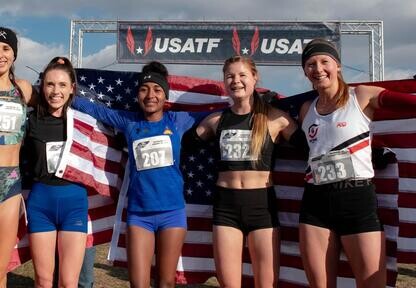
Cooper Teare shows his range with impressive victory
Teare was the 2021 NCAA 5,000m champion at the University of Oregon and has shown that his range extends both up and down the distance spectrum. Teare is the NCAA mile record holder at 3:50.39 and was the 2022 US champion at 1500 and now he is the US cross country champion. That sort of range has become increasingly common on the international level but in the US, it’s rare for a 1500 guy to run USA XC, let alone win it. Teare is the first man to win US titles at both 1500 meters and cross country since John Mason in 1968, and even that comes with a caveat as the US championships were separate from the Olympic Trials back then. Before Mason, the last guy to win both was Abel Kiviat (cross country in 1913, US mile title in 1914). You all remember him.
On the women’s side, Shelby Houlihan, since banned for a doping violation, won USA XC and the US 1500 title back in 2019.
Teare’s coach Ben Thomas told Carrie Tollefson, who was calling the race for USATF.TV, that the aim of this race was just to see where his fitness was at against a top field. Clearly, it’s very good. In his first race since leaving the Bowerman Track Club after the 2023 season, Teare, wearing a bright pink undershirt beneath his Nike singlet, ran with the lead pack until Morgan Pearson began to string things out just before entering the final 2k loop. As opposed to Pearson, who was giving it all he could to drop the field, Teare looked relaxed and in control, and at 9k he eased past Pearson into the lead before dropping the hammer to win comfortably. It was a smart run and an impressive display of fitness.
Teare may also have slayed some demons from his last cross country race in 2021, when he crawled across the finish line in the final meters. Now he’s gone from 247th at NCAA XC to a national champion.
Teare’s plans for the rest of the winter are up in the air. He will run in a stacked 2-mile at Millrose on February 11 against the likes of Grant Fisher and Josh Kerr before competing at USA Indoors a week later. World Indoors could be an option if he makes the team — as could World XC, if he wants it. No matter what he chooses, Saturday’s run was a great way for Teare to kick off the Olympic year.
Weini Kelati demolishes the competition
On paper, Kelati, who runs for Under Armour’s Dark Sky Distance team in Flagstaff, was the class of this field. The only question was whether she would be recovered from racing hard at last weekend’s Houston Half Marathon, where she set the American record of 66:25. The answer was a definitive “yes” as Kelati, after running with the leaders for the first 4k, dropped a 3:05 5th kilometer to break open the field. From there, her lead would only grow to the finish line as she won by a massive 37.3 seconds over runner-up Emma Hurley.
Kelati was not at her best heading into last year’s World XC in Australia as she had missed some time in the buildup due to injury. She still managed to finish a respectable 21st overall. Her aims will be much higher for this year’s edition in Belgrade.
Kelati also made some history with her win today. She’s the first woman to win Foot Locker, NCAA, and USA cross country titles.
(01/22/24) Views: 121Jonathan Gault
Kenyan Anderson Seroi conquers Hong Kong Marathon
Kenya's Anderson Seroi wins Hong Kong Marathon, vows to return for a faster finish amid strong international competition.
Kenya’s Anderson Saitoti Seroi triumphed in the Hong Kong Marathon completing the grueling course in an impressive time of two hours, 12 minutes, and 50 seconds.
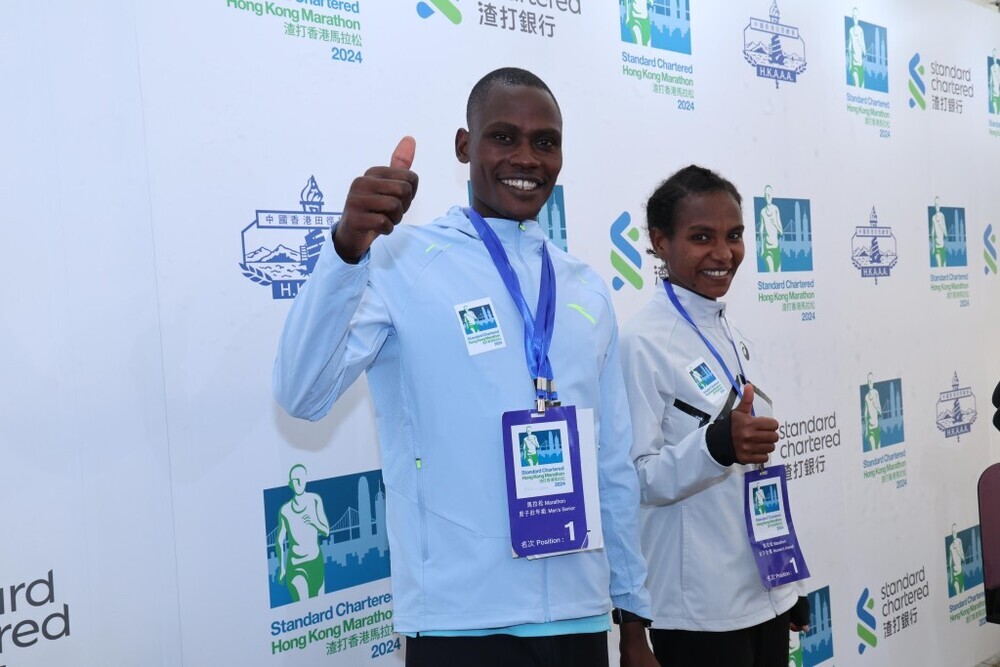
Seroi's victory came amidst challenging conditions, yet his resolve remained unshaken as he immediately set his sights on returning next year for an even swifter conquest.
The race, held on Sunday, saw Seroi narrowly outpace South Africa’s seasoned runner Stephen Mokoka, who secured the second spot with a time of 2:12:58.

Mekuant Ayenew from Ethiopia rounded out the top three, finishing in 2:13:09.
This year's marathon was marked by a moderate temperature of around 15 degrees Celsius (59 degrees Fahrenheit) at the start, providing somewhat ideal conditions for the runners.
In the women’s category, Ethiopia’s Medina Armino emerged victorious, clocking in at 2:28:47.
She was closely followed by Beatrice Cheptoo and Gadise Mulu, who completed the race in 2:29:30 and 2:29:46, respectively.
Despite the physical toll of the race, Seroi's spirit remained high.
Post-race, he expressed his gratitude and affection for the city of Hong Kong.
“First of all, I want to thank God for the win, but also Hong Kong, it’s a beautiful city,” Seroi said.
“I feel really good, the course is tough but I enjoy running it.” His determination was evident, as he pushed himself to the brink of exhaustion, even experiencing sickness after crossing the finish line.
Seroi, 30, is already planning his return, aiming to shatter his current record.
"I ran two hours 12 this year, so next year I’ll aim for two hours 10," he stated, showcasing his relentless ambition.
His 2024 goal is a testament to his unwavering commitment to excellence in the sport.
In a historical context, Seroi's time this year marks a significant achievement, but it also serves as a reminder of the fiercely competitive nature of the marathon.
In 2023, a time of 2:12:00, achieved by Senbeta Geza Tadease, was only good enough for third place, highlighting the continually evolving standards in marathon running.
The event also doubled as the Asian Marathon Championships, where India’s Man Singh claimed gold with a time of 2:14:19.
He was followed by China’s Huang Yongzheng and Kyrgyzstan’s Ilya Tiapkin, who finished in 2:15:24 and 2:18:17, respectively.
(01/22/24) Views: 119Festus Chuma
Hosea Kimeli given three year ban as 2023 Zagreb Marathon title stripped off his name
Hosea Kimeli has been slapped with a three-year ban by the AIU and all his results since October 8, 2023, have been disqualified, including the forfeiture of any titles, awards, medals, points, prizes and appearance money
The Athletics Integrity Unit (AIU) has slapped Hosea Kimeli Kisorio with a three-year ban for an anti-doping rule violation.
The 33-year-old found himself on the list of shame after his tests came out positive for the presence of EPO, a Prohibited Substance under the WADA 2023 Prohibited List under the category S2 Peptide Hormones, Growth Factors, Related Substances and Mimetics.

As per AIU, the period ineligibility to be imposed is therefore a period of four years, unless the Athlete demonstrates that the Anti-Doping Rule Violations were not intentional.
“The Athlete has failed to demonstrate that the Anti-Doping Rule Violations were not intentional. Therefore, the mandatory period of Ineligibility is a period of Ineligibility of four years.

"However, Rule 10.8.1 ADR provides that an athlete potentially subject to an asserted period of Ineligibility of four (4) years may benefit from a one (1)-year reduction in the period of Ineligibility based on an early admission and acceptance of sanction,” the AIU further stated, adding that Kimeli admitted having committed the crime earlier this year, thus the reduction of the sanction.
This means that his results since he won the 2023 Zagreb Marathon have been disqualified.
Meanwhile, Kimeli was banned alongside his compatriot Ayub Kiptum who also received three years with his results from October 21, 2023 disqualified. Kiptum was banned for the Presence/Use of a Prohibited Substance (Testosterone).
(01/20/24) Views: 118Abigael Wuafula
Ethiopian runners Hayle Lemi, Aberash Minsewo win races at the Mumbai Marathon
Ethiopians Hayle Lemi and Aberash Minsewo won the men’s and women’s elite races, respectively, at the Mumbai Marathon 2024 on Sunday.
Hayle Lemi, who set the new course record with a timing of two hours, seven minutes and 32 seconds (2:07:32) last year, clocked 2:07:50 for the top spot this season. Aberash Minsewo, meanwhile, won the women’s race in 2:26:06.
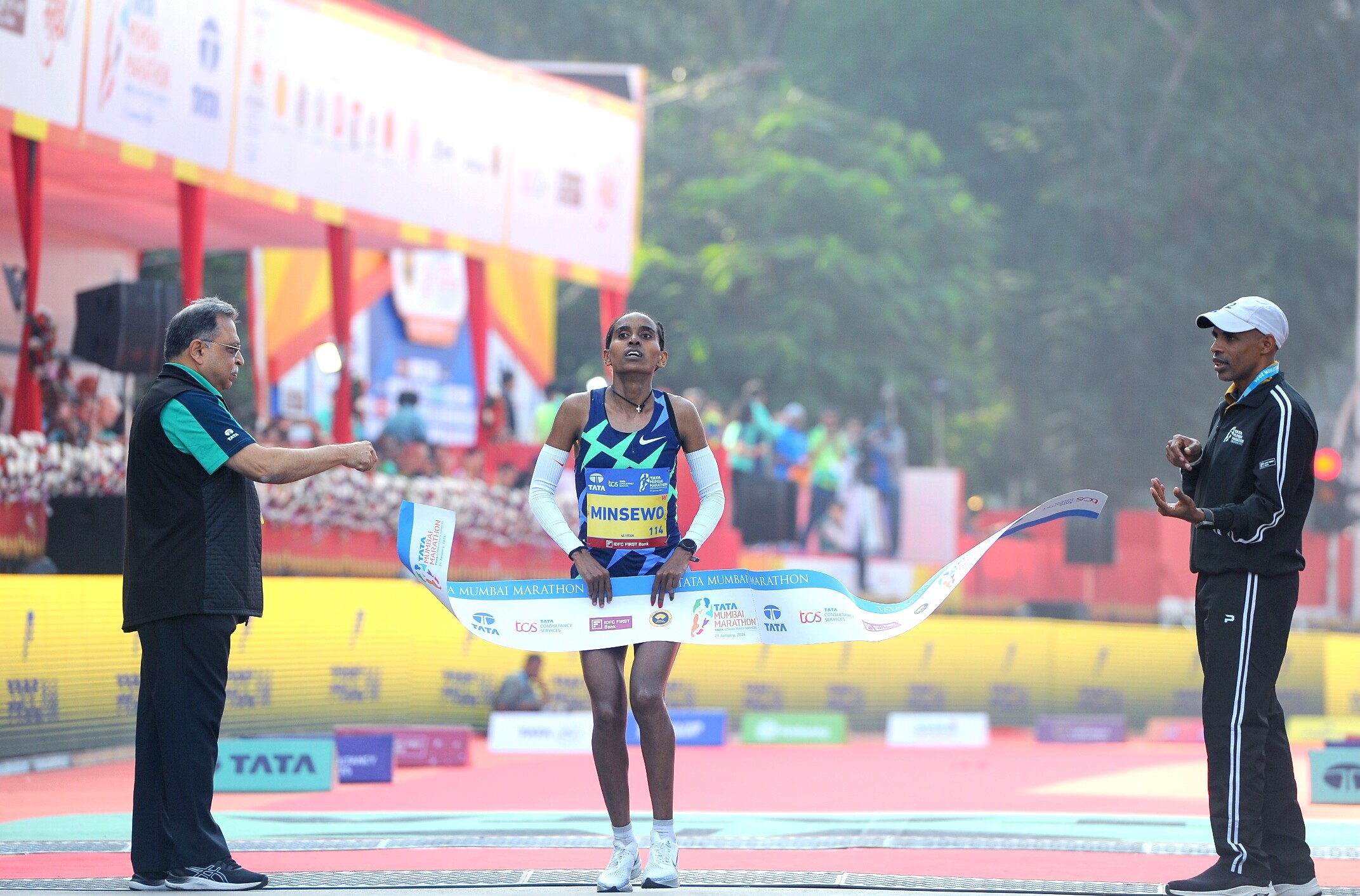
Interestingly, all podiums in the elite race went to the Ethiopian runners. Lemi, who won the 2016 Boston Marathon, was followed by Haymanot Alew, who took the silver in the men’s event in 2:09:03. Mitku Tafa settled for bronze in 2:09:58.
In the women’s race, Muluhabt Tsega took the silver in 2:26:51 while Medhin Bejene clocked a personal best to take the bronze in 2:27:34.
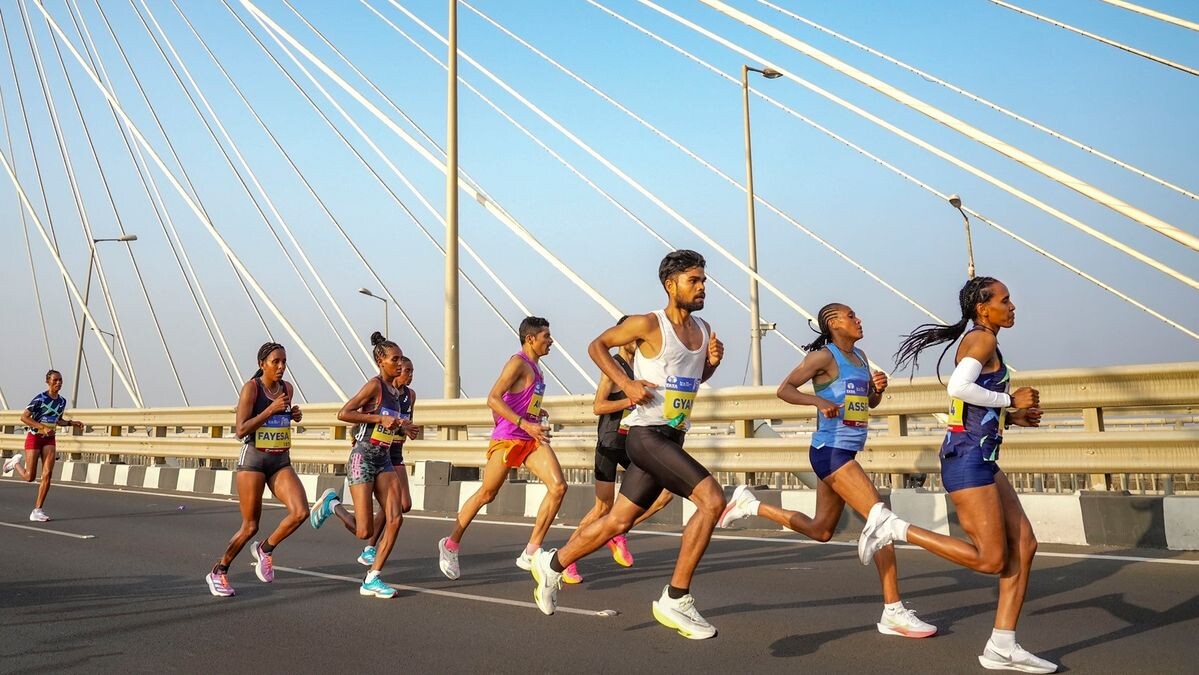
Indian runners at Mumbai Marathon 2024
Among Indian elite runners, Mumbai Marathon 2020 champion Srinu Bugatha pipped 2023 champion Gopi T and won the men’s race in 2:17:29 while Nirmaben Thakor Bharatjee won the women’s race in 2:47:11.
Gopi T followed Bugatha in 2:18:37 while Sher Singh Tanwar completed the Indian men’s podium, clocking 2:19:37.
Nirmaben Thakor Bharatjee, meanwhile, beat second-placed Reshma Kevate by a margin of 16 minutes and 23 seconds. Shyamali Singh came third among the Indian women in 3:04:35.
Sunday’s race was the 19th edition of the Mumbai Marathon, which is a World Athletics Gold Label Road Race event.
Mumbai Marathon 2024 winners
Overall elite men
Hayle Lemi (Ethiopia) - 2:07:50
Haymanot Alew (Ethiopia) - 2:09:03
Mitku Tafa (Ethiopia) - 2:09:58
Overall elite women
Aberash Minsewo (Ethiopia) - 2:26:06
Muluhabt Tsega (Ethiopia) - 2:26:51
Medhin Bejene (Ethiopia) - 2:27:34
(01/22/24) Views: 118Ali Asgar Nalwala
Four Olympic Medalists Set to Toe the Line in the Women's 60m at the 116th Millrose Games
With just over three weeks to go until the running of the 116th Millrose Games, the excitement for this spectacular event has never been greater. One of the deepest races of the afternoon will be the Women’s 60 Meter Dash, which features no fewer than four Olympic medalists, in addition to an NCAA champion, last year’s runner-up, and more.
The 116th Millrose Games will take place at the Nike Track & Field Center at The Armory on Sunday, February 11th.
The stellar field is as follows:
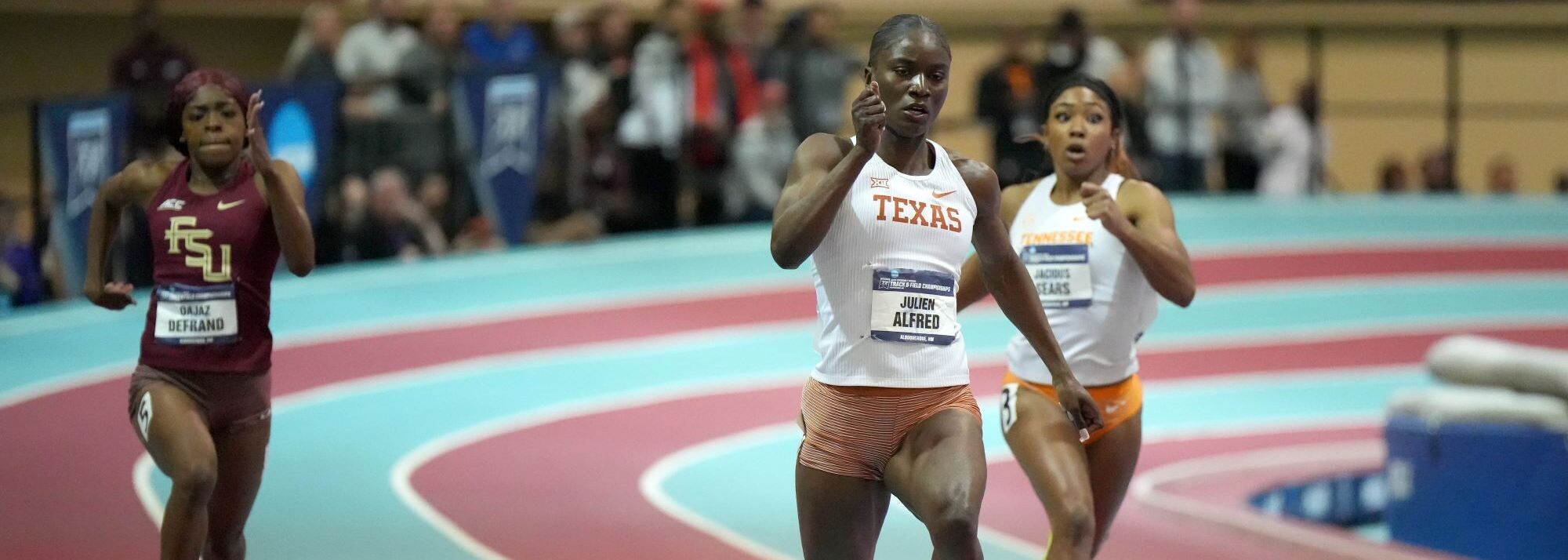
-Dina Asher-Smith is the 2019 World Champion in the 200m. She is a two-time Olympic bronze medalist, and her 2019 gold is one of five World Championship medals that she owns. Asher-Smith holds the British records in the 60m, 100m, and 200m.
“The Millrose Games is one of the most prestigious and historic indoor competitions in the USA, and I am looking forward to racing there for the first time,” said Asher-Smith. “I am really enjoying my new training set up in Austin, and I’m looking forward to a big year in 2024.”
-Julien Alfred was a seven-time NCAA champion at the University of Texas. Her 60m best is not only the NCAA record, it also equals the North American record. In her first season as a professional, Alfred finished fifth in the 100m at the 2023 World Championships, representing St. Lucia.

-English Gardner is an Olympic gold medalist on the 4x100m relay in 2016. A local favorite from New Jersey, she is the tenth-fastest woman in history in the 100m, and she won this race at the Millrose Games in 2019.
-Briana Williams won Olympic gold on the 4x100m relay for Jamaica in 2021, and she is a two-time World Junior Champion.
-Shashalee Forbes is an Olympic silver medalist on the 4x100m relay, and she won the 200m Jamaican championship in 2017.
-Tamari Davis placed second in this race at last year’s Millrose Games, before winning a gold medal on the 4x100m relay at the World Championships.
-Marybeth Sant-Price is the 60m bronze medalist at the 2022 World Indoor Championships.
-Celera Barnes is an NACAC champion on the 4x100m relay.
Stay tuned over the coming weeks before the 116th Millrose Games, as the world-class start lists are finalized. Top athletes already confirmed to compete include Laura Muir, Elle Purrier-St. Pierre, Yared Nuguse, Alicia Monson, Grant Fisher, Danielle Williams, Josh Kerr, Yaroslava Mahuchikh, Christian Coleman, Keni Harrison, Andre De Grasse, Nia Ali, Chris Nilsen, and KC Lightfoot, with even more Olympians and World Championship medalists still to come.
As always, the Millrose Games will feature the absolute best athletes in the sport, including dozens of Olympians and world champions. The Millrose Games is a World Athletics Indoor Tour Gold meet. With highest-level competition at the youth, high school, collegiate, club, and professional levels, there is truly something for everyone at the Millrose Games.
(01/19/24) Views: 114World Athletics comes under fire after controversial Xiamen and Tata Mumbai Marathons
Athletics enthusiasts have raised eyebrows concerning the credibility of the rules governing Platinum Label road races after recent happenings at the Xiamen and Tata Mumbai Marathons.
World Athletics has for long been known to champion for viewership boosts in China and India, with the belief being that the presence of renowned athletes and remarkable performances can significantly enhance engagement for those races.
However, the race organizers of some of the elite races in India and China together with World Athletics have come under fire after two recent marathons breached one of the rules of the World Athletics Platinum Label road races.
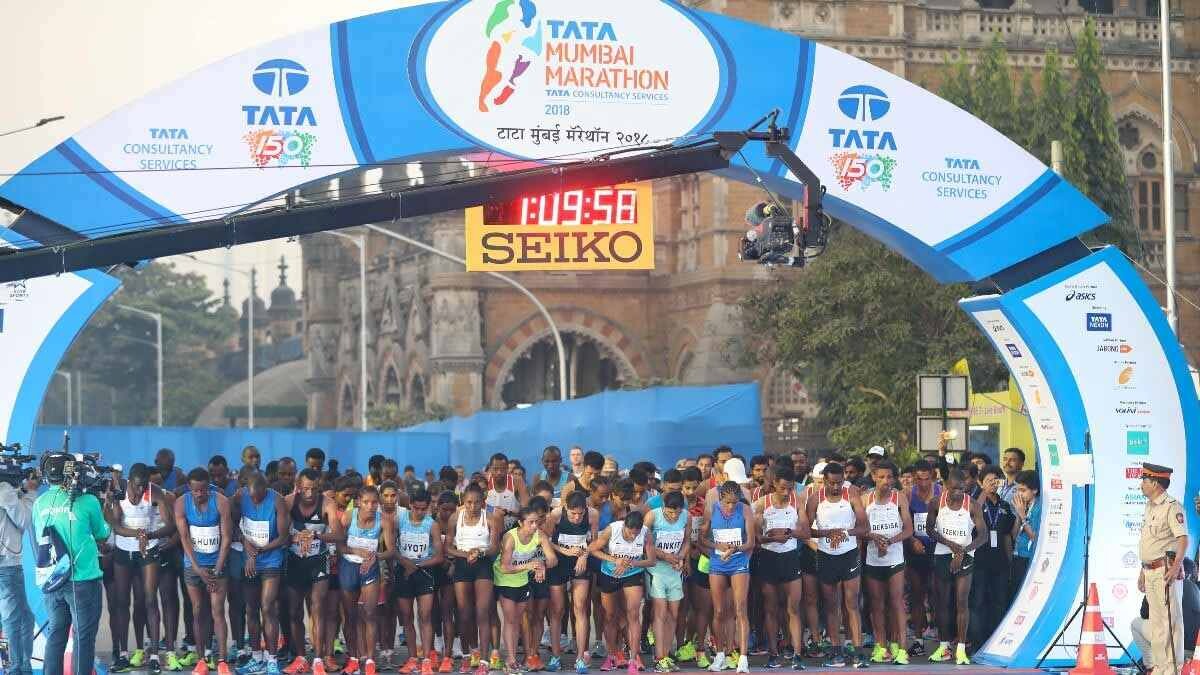
According to World Athletics, an intentional arrangement, act or omission aimed at an improper alteration of a result or the course of an event or competition in order to remove all or part of the unpredictable nature of the event or competition to obtain an undue benefit for oneself or others is a violation.
According to an analysis done by the Canadian Running Magazine, former world half marathon record holder Kibiwott Kandie and defending champion Philimon Kipchumba withdrew from the Xiamen Marathon after covering 20km and this was in order for them to collect their appearance money.
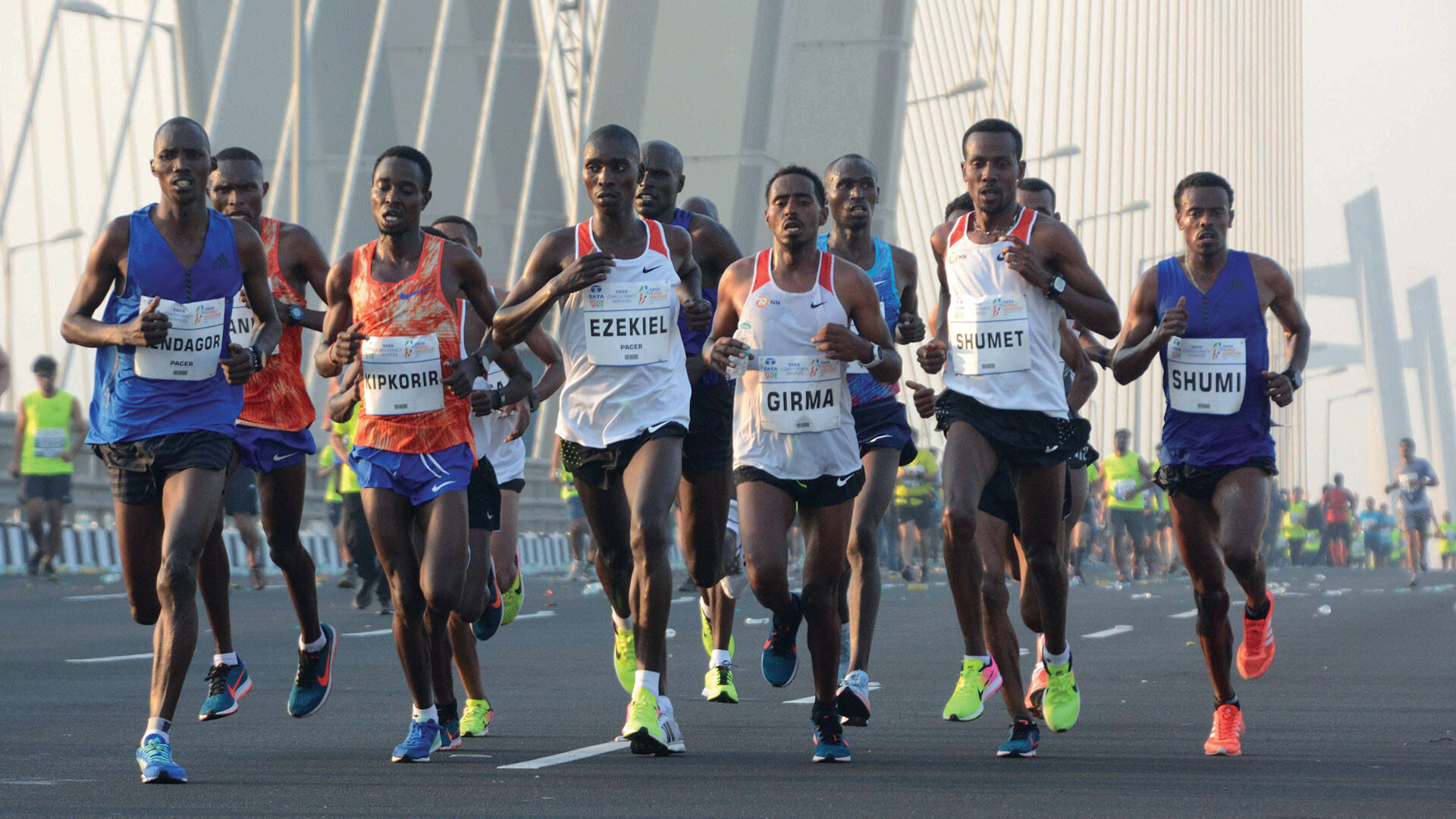
The race organizers were aiming to draw more attention to marathon events in China but their plan seemed not to work out. According to further reports, the organizers are said to have invited 22 elite international athletes, but only seven of them finished.
Kandie and Kipchumba withdrawing from the marathon immediately after crossing the 20K mark, raising eyebrows from locals as they posed for photos, shook hands and smiled for photos.
Before the race, World Athletics did a preview of the race, however, none of the top athletes who were featured in the preview finished the race.
When the Canadian Running Magazine reached to a World Athletics representative, the individual said: “As I am sure you understand, whether due to injury, personal reasons or other, we are never able to predict with certainty who will start or finish a race, come event time. Appearance fees are an important aspect of our sport, and many others–including tennis and golf.”
Although athletics and the pro tennis structure share similarities, they also have one major difference since a tennis player who is paid an appearance fee to play a tournament, or a match, will finish the match, unlike in elite marathoning.
Meanwhile, the 2024 Tata Mumbai Marathon in India on January 21 presented another example of high-performance athletes seeming to collect appearance fees without providing strong performances.
Ethiopian runner Lelisa Desisa headlined the Gold-Label men’s field, and two-time Amsterdam Marathon champion Tadelach Bekele headlined the women’s field. Both athletes started the race, but fell off the lead pack and dropped out.
(01/23/24) Views: 111Abigael Wuafula
Run Before or After Workout to Maximize Gains
Strength training is an essential component of a well-rounded running training program, but for busy runners, it can be tricky to fit it into your program without jeopardizing your running workouts. Emma Vaillancourt, a registered physiotherapist and running coach in Thunder Bay, Ont., explains how to effectively incorporate strength training into your running routine to maximize gains and minimize burnout.
Should you strength train before or after running?
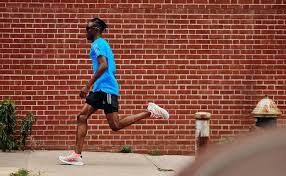
Vaillancourt explains that the order of strength training and running depends on your goals and where you’re at in your racing season. During the off-season, when running is less of a priority, you may choose to strength train first. In contrast, during the in-season, when your focus is on building running volume or intensity, running should usually come first.
If you plan to do strength training on days when you have intervals or speedwork, it’s generally better to do strength work after your run. This helps avoid fatigue and a possible negative impact on your workout. Vaillancourt also notes that running immediately before lifting can moderately impair lower-body strength gains. “If your goal is to improve strength, lift before the run,” she says. “If you aim to enhance endurance adaptations like aerobic capacity, the order doesn’t matter as much.”

Is it better to leave space sessions or can you do them back-to-back?
“It is recommended to allow at least three hours after high-intensity running before engaging in strength training,” says Vaillancourt. “During this recovery window, it’s important to refuel with a high-carb and protein meal to replenish your energy stores.”
Vaillancourt recommends at least 24 hours’ recovery after strength training before engaging in high-intensity running, but if you’re pairing strength training with easy runs, you can reduce the time between them.
Of course, most of us can’t plan our day around our strength training and running plans, so if scheduling becomes an issue, doing one activity right after the other is still beneficial. “Something is often better than nothing!” says Vaillancourt.
Alternatively, she suggests splitting your strength training into smaller blocks, focusing on shorter, more frequent sessions throughout your week. This approach causes less fatigue and can be more manageable for some runners. “The idea here would be to do 10 to 20 minutes of strength work (maybe two or three exercises) but more frequently in your week, compared to the traditional 30 to 60 minutes done two or three times per week,” she says.
How often should runners strength train?
The frequency of strength training depends on several factors, including your experience level, the point in the season, and the time you can commit to training in a week.
In the off-season and early season, Vaillancourt recommends strength training two to three times a week, focusing on higher volumes of training. “If you’re training for a single race, such as a half-marathon or marathon, you will likely want to drop down to one to two times per week as your mileage peaks,” she says. “As you get closer to your race and are entering your taper, you can drop to once a week for maintenance.”
Running before or after workouts has a drastic effect on training effectiveness. Running before a strength workout can compromise strength training gains or cause injury. On the other hand, doing a strength workout before running could cause running form to deteriorate, which can also lead to injury or compromise strength training gains.
Athletes only have so much time. Sometimes that means doing cardio workouts (like running) and strength workouts (like lifting weights or bodyweight workouts) on the same day. Find out if it’s better to run before or after workouts and how to maximize same-day training benefits.
The Interference Effect
Running Before or After Workouts Depends on Workout Goals
Run Before or After Workout as a Strength-Focused Athlete
Running Before or After Workout as a Runner
Running Before or After a Workout if the goal is to Lose Weight
Running Before or After a Workout if the Goal is to Improve Overall Fitness
THE INTERFERENCE EFFECT
The interference effect is a physiological phenomenon that states that cardio or endurance exercise (like running and cycling) interferes with the cellular adaptions elicited via strength training (namely, muscle size and overall strength). However, it also states that strength training does not appear to necessarily adversely affect endurance adaptations.
The keyword here is: necessarily. More on that later on.
RUNNING BEFORE OR AFTER WORKOUTS DEPENDS ON WORKOUT GOALS
Athletes engaging in concurrent strength training and running need to prioritize goals. This should happen on an individual workout basis as well as overall athletic goals. For example, someone looking to build muscle mass and overall strength must concede that cardio training will–to some extent–inhibit strength gains. On the other hand, a runner is unlikely to be a very successful bodybuilder.
Athletes considering strength training and cardio training need to decide which is more important for their athletic development: muscle mass or endurance. This is not to say that strength-based athletes should stop all cardio. Likewise, endurance athletes like runners should do some strength training.
The careful blending of strength and endurance training is what is known as concurrent training. Strength training–such as with weights or bodyweight–is an important component of endurance performance. Sports like running and cycling do not stress all the necessary muscles in the body. For example, simply running or cycling can leave one with hip, lower back pain and upper body issues due to underdeveloped muscles.
In short, most athletes should do a bit of strength training and a bit of cardio. The ideal blend of each will depend on the athlete’s goals: muscle mass or endurance.
RUN BEFORE OR AFTER WORKOUT AS A STRENGTH-FOCUSED ATHLETE
Athletes whose primary goal is to build muscle and overall strength should try to avoid doing cardio and strength training on the same day. If this cannot be avoided, strength-focused athletes should do their cardio workouts after strength training. This will help minimize the interference effect (i.e., the body will prioritize strength adaptations over endurance adaptations).
How long should cardio workouts take place after strength workouts? The longer the better. At least six to nine hours is ideal. Spacing strength and cardio workouts as far apart as possible will help maximize strength adaptations. Again, if pure strength is the primary goal, strongly consider doing cardio and strength workouts on entirely different days. Don’t do a hard strength workout and a hard (e.g., HIIT) running workout on the same day.
ALTERNATING LOWER-BODY AND UPPER-BODY SAME DAY WORKOUTS
Cardio exercises like running and cycling are lower-body dominant. Performing upper-body workouts on the same day as running will have no meaningful effect on the strength workout. However, performing lower-body strength workouts shortly after a running workout will likely lead to diminished strength gains.
It follows that doing lower-body strength workouts should then only take place on non-running days.
Alternating workouts with upper-body strength days during running days and lower-body strength workouts on non-running days will help minimize or even eliminate the interference effect. The only caveat to this is if the athlete can handle the higher training load. This means having an optimized nutrition plan (here’s the 9 best foods for runners and the 9 best foods to build muscle), resting and being sensitive to their body’s injury or overtraining signals.
RUNNING BEFORE OR AFTER WORKOUT AS A RUNNER
Strength training could be a key component to unlocking running performance. It may be the only way advanced runners can even achieve further progress. Beginner runners benefit from strength training by working muscles that help promote running economy and efficiency, which will ward off injury and promote total body fitness.
If running (or any endurance activity, such as cycling) is a primary goal, do cardio after strength training. However, if the cardio session will be shorter and low intensity (like a simple endurance run of 30-90 minutes), doing high-repetition, low-weight or bodyweight strength training AFTER running can help build muscular endurance and improve running stamina.
Muscular endurance is different than absolute strength. Whereas pure strength is about how much force one can produce quickly (e.g., during a squat), muscular endurance is about training muscles to resist fatigue over long periods of time. One can easily see how muscular endurance is beneficial to runners: running longer distances like half-marathons, marathons and even ultramarathons. Muscular endurance will allow runners to retain their running form longer, which means not only maintaining running economy for longer but also decreasing the risk of running-related injuries.
Sound worth it? Here’s how to do it:
Do an easy run. Try to avoid running hills. Don’t do intervals. Just do a basic endurance-paced run anywhere from 20 to 90 minutes. It should feel almost boring.
After the run and while the body is still warmed up, do a strength training session that focuses on high repetitions and low (if any) weight. Repetition ranges should be 20 to 30 per set. Cool down with light jogging.
Combining running and strength training back to back is a serious session. Make sure to fuel properly before, during and after (like with a hot cocoa recovery drink). Don’t finish the workout starving. The recovery demands from this type of training are huge–but so are the benefits. Don’t do these big sessions every day–twice a week is plenty and should likely be followed by a full recovery day or an easy run (for advanced athletes).
RUNNING BEFORE OR AFTER A WORKOUT IF THE GOAL IS TO LOSE WEIGHT
It is often recommended to do strength training before running to empty carbohydrate stores. The idea is to force the body to get its energy primarily from fat rather than carbs during the run. However, the problem with this strategy is that it is very difficult to finish a long-distance run on empty carbohydrate stores. While it is true that a much higher percentage of fat is burned for energy, the calorie burn, on the other hand, is relatively low because of the low intensity or low duration of the workout.
On top of that, perceived exertion of the workout will be much greater when continuing to workout with depleted glycogen stores. This can cause athletes to prematurely quit the workout; therefore, reducing maximal calorie expenditure. Additionally, athletes who choose to work out this way will finish workouts extremely hungry. This can lead athletes to massively overeat after a very tough workout, which will likely result in weight gain and developing unhealthy nutrition habits.
If weight loss is a goal, a negative energy balance is key: If one burns more calories than they consume, they will lose weight. In the end, what matters is how many calories are burned in total through the workout. Spread your workouts out over several days. That way one can train at a high intensity and burn a lot of calories, and at the same time give the body the time it needs to recover properly before the next workout.
RUNNING BEFORE OR AFTER A WORKOUT IF THE GOAL IS TO IMPROVE OVERALL FITNESS
In this case, basically do cardio and strength training in whichever order. Still define a specific training goal for each session. Just be careful about doing too much and getting injured. Start slow, add a little bit of training each week, take a day off if aches and pains start to creep up. Once the gains stop coming, consider reexamining training structure to focus on more specific goals. Try this workout after a run for a great cardio and strength session.
This workout focuses on neglected leg muscles and glute strength (i.e., a firmer butt). It’ll also help improve posture. Learn and do the following movements: Curtsy lunge, kneel & stand, side lunges, single-leg deadlift and wall sits.
In general, avoid doing two workouts back-to-back. Spacing running and strength workouts far apart will allow the body sufficient time to adapt and recover before the next session. If running before or after a workout is the only option, follow the training schedule recommendations above to elicit maximal adaptations. If all of that is too complicated and the goal is to just get fit, do whatever is most convenient.
(01/19/24) Views: 108Morgan Cole
Orlando Unveils 2024 US Olympic Marathon Trials Course, Announces Races Will Start at 12:10 and 12:20 pm ET
Just over six months out from race day, organizers revealed the course for the 2024 U.S. Olympic Team Trials – Marathon on Tuesday morning. The race, which will be held on February 3, 2024, in Orlando, Fla., will consist of one 2.2-mile loop through the downtown business district and three 8-mile loops through the city’s Milk District — so-called because it features the headquarters of T.G. Lee Dairy, which has been based in the area for 98 years. It will start and finish at the Walt Disney Amphitheater at Lake Eola Park. None of the course will run through Disney World, which is located to the southeast of the city of Orlando.
Unlike the Paris Olympic marathon course, which features considerable climbing and descending during the middle of the race, the Orlando course is relatively flat, with few small inclines but a variation of just 38 feet (11.6 meters) between the course’s lowest and highest points.


Mid-Day Start Time
Getting the actual course layout is nice but not that significant. We knew the course was going to be mostly flat as Orlando is mostly flat.
Organizers also announced something more significant: the start times for the race. The men will begin at 12:10 p.m. ET with the women to follow at 12:20 p.m. ET. Both races will be shown in their entirety on NBC.
With basically a noon start in Florida, it’s possible the race could be run in quite warm conditions. The debate of the once-rumored but now confirmed 12ish start times has been intense on the LRC forums for over a month now.
A couple of Trials veterans have already shared their thoughts, with Sara Halland Des Linden offering contrasting viewpoints. Hall, who is known to not like racing in hot weather, expressed concern about the heat and the safety of the athletes. She even challenged USATF CEO Max Siegel to run a hot weather marathon this summer.
It must be noted that Orlando has not seen a 90-degree day in February since 1962.
Meanwhile, two-time Olympian Linden had no issue with the start time and thought it could boost her chances of making the team by running smart.
For those interested in what the weather is typically like in Orlando on February 3, here’s a look at the temperature, wind, and dew point at specific times from 2012-22.
If the goal of the Olympic Marathon Trials was for every athlete to run their fastest possible race, obviously it would be better to start the race earlier, but there are other concerns. Television is the reason why the race is being held in the afternoon (there’s not a huge amount of West Coasters watching TV at 5 or 6 a.m. on a Saturday). The 2016 Trials began at 1:06 p.m. ET (10:06 a.m. local in Los Angeles) while the 2020 Trials in Atlanta began at 12:08 p.m. ET. Both races were shown on NBC in their entirety.
The fact is, in professional sports, there are often competing interests — what’s best for the athletes isn’t always what’s best for TV, and someone is going to be unhappy. USATF designed its US championships schedule this year with athletes in mind but the result was that USATF could not get the US outdoor championships shown on NBC. With the Trials, USATF is prioritizing the broadcast on NBC with the athletes a secondary consideration. You can be mad about one of those two things, but not both.
Orlando can be warm in February, no doubt about it — from 2012-22, the average temperature at 2 p.m. on February 3 was 73 degrees. But guess which race also is warm? The Olympic marathon. The Olympic marathons will be held on July 10-11, 2024. On July 10-11 this year, it was 73 degreees at 10 a.m. in Paris, which is when the marathons would be nearing their completion (8 a.m. start times).
In general, we are for athletics to be on live TV so we are fine with the races being scheduled for 12:10 and 12:20. We do believe if the temperatures are truly extreme (say 75 or higher at the start, certainly 80), USATF should move the race up and show it on tape-delay. But if you’re looking for conditions that mirror the Olympic marathon, Orlando in February is not a bad facsimile.
The one big issue we still have is with the new Olympic qualifying system. If you haven’t run under 2:11:30 for the men or 2:29:30 for the women during the qualifying window, you aren’t going to the Olympics even if you are in the top three. We think that’s ridiculous but those are the rules. That’s tough to do in warm weather. While it’s very unlikely someone who hasn’t run at least 2:11:30 or 2:29:30 in the window finishes top three, it could happen in the case of someone just moving up the marathon like Molly Seidel did in 2020 or someone coming back from injury or maternity leave like Kellyn Taylor.
We really wish WA would simply accept the top three from the Trials since the US is sending three per gender most likely no matter what happens, but we’d rather take the small risk that someone without the 2:11:30/2:29:30 times is top three and have the race be on live TV than put it early in the morning. Plus athletes could chase the time up until April 30 and we’d love to see WA have to take the PR hit of someone on the way back from maternity leave having to run a time. Maybe it would finally make them let the spots go to countries as long as the countries hold legitimate trials.
(To cover all our bases, it’s worth noting there’s a small chance on the men’s side that the US has only one or two qualified men’s athletes at the start of the Trials. We’re pretty sure we’ll have at least three but it’s not set in stone and we won’t know for sure until after the fall marathon season is over. If that’s the case, then the start time is more problematic as the US men would either have to hit the 2:08:10 auto standard or run fast enough to raise their world ranking into a qualification spot. If that’s the case and the US men don’t have three spots guaranteed, we think the men’s start time should be moved up and shown on tape delay but keep the women’s race as scheduled).
Talk about the trials on our forum:
(01/21/24) Views: 108Let’s Run
'Fartlek' May Be a Weird Name for a Run, But It'll Make You Faster (While Having Fun)
When kids run, they don’t track their heart rates or pay attention to their paces. They just zoom along however fast as they like, and they often laugh while they do it. That kind of joy in running can be rare to capture as an adult. But there’s one workout that brings a bit of that fun back: the Fartlek.
Sure, the term may sound a little silly. For that, you can blame the Swedes—Fartlek translates as “speed play” or “speed game” in Swedish. “I like to remind my athletes that [Fartleks are] just basically playing with speed in a way that feels good to them on the day,” says USATF-, RRCA-, and UESCA-certified running coach Amie Dworecki, CPT. “It does involve some faster running, but running in a way that's fun.”
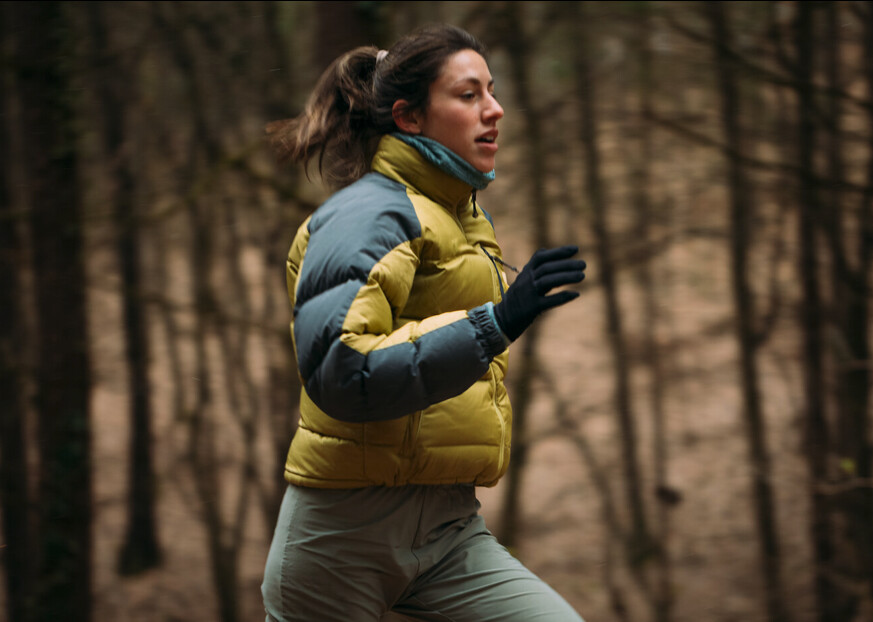

If this sounds like something your training plan could use more of, here’s what you need to know about Fartlek training, why it could benefit your running, and how to get the most out of this workout.
What is a Fartlek?
The premise of Fartlek training is fairly simple. “It's basically short bursts of speed when you're running mixed in with your regular running pace,” says USATF- and RRCA-certified running coach Marnie Kunz, CPT. Those bursts can be as random as sprinting to the next stop sign every time you see a red car. Or you can have more structured sets of one minute quicker, then three minutes easier, for example. Either way, it’s continuous running, so you return to your relaxed, conversational base pace after each burst of speed.
The idea behind the workout came from Swedish national cross-country coach Gösta Holmér in the 1930s. He wanted to make his struggling team more competitive by combining speed work with endurance training. It worked: His runners began breaking records in multiple events—and the rest of the world began taking notice. Now, Fartleks are a staple part of many running programs.
The difference between intervals and Fartlek training
Both Fartlek and interval workouts are forms of speed training where you push the pace for a while, then let your body recover somewhat before pushing again. But while intervals are precisely measured, and often done on a track, Fartleks are more informal. You can do them anywhere, and the bursts of speed may vary in distance or intensity based on how you’re feeling.
Also, even when you pick up the pace, you aren’t pushing so hard that you need to stop running after a faster burst, says Dworecki. “You don't want to hit that 10 out of 10 to where you feel like you have to walk afterward.” While after an interval, you may take a break to huff and puff on the side of the track with your hands on your knees, the point of a Fartlek is to keep running the whole time to build your endurance while also working on your speed.
These workouts end up being slightly easier on the body because you aren’t pushing quite as hard as you may during intervals. That’s why Dworecki often recommends Fartleks to runners as a precursor to interval training. “It introduces your body into speed work,” she says. That can be helpful both for beginners who are newer to running, or runners who are in the earlier stages of a training cycle.
How Fartleks can improve your running
Fartleks have several benefits if you work them into your training strategically.
1. They can help protect your body against injury
Because Fartleks can be used as a way to ease into speed work, Dworecki says they can help to keep your body healthy. “It helps you prevent injuries that might come up if you just jumped into interval training,” she says. For the same reason, she often gives her athletes Fartleks during the week after they’ve had an especially difficult long run when she’s afraid they may not be recovered enough to do harder intervals or tempo runs.
2. They can make you faster
Fartleks are a great way to improve your VO2 max (the gold standard for measuring cardio fitness) and increase your lactate threshold (the point at which lactate accumulates faster than your body can handle, leading to fatigue), according to the National Strength and Conditioning Association. One small 2020 study found that regular Fartlek training can also significantly improve muscular endurance1.
What makes Fartleks unique is that they keep your heart rate high, rather than letting it come all the way down between intervals. This trains your body (and mind) to push hard even as you get tired. “Your body adapts to running faster even when you're fatigued because you're running throughout the workout—you don't get a full recovery,” says Kunz. This can be especially helpful practice for races, where you may want to speed up for a bit to pass other runners, and then still keep running to the finish line.
3. They can help you improve your running form
Spending some time running faster can make you run more efficiently. “You’re improving your biomechanics,” says Kunz. For example, to speed up, most of us naturally pick up our knees more, lean forward, and increase our cadence. All of these add up to a better running form.
4. They can help you rediscover the fun of running
Intervals typically feel like hard work. But a Fartlek can make running feel more like play. “This is a workout that really should leave you feeling good and invigorated,” says Dworecki. And for runners who normally only do steady-paced runs, a Fartlek can switch things up in an unintimidating way.
How do I start Fartlek training?
For beginners, both coaches recommend starting with Fartleks by adding three or so faster segments into your regular run. Each burst should be about 100 meters or a minute long. Then give yourself three to five minutes to recover in between. Don’t worry if that feels too easy. “If you feel like you can do more, then the next time do a little bit more. But it's always better to feel good at the end of your workout rather than risking injury,” Dworecki says.
Advanced runners can work about eight or so faster segments into a Fartlek run. Dworecki suggests keeping each between one and two minutes and doing them at whatever pace feels good to you, with one minute of recovery in between.
No matter your level, remember the basics: Make sure to start with a solid warmup of pre-run dynamic stretches then at least 10 minutes or one mile of easy running, says Kunz. After the speedy stuff is done, finish off with another 10-minute cooldown of easy running.
How to make the most out of Fartlek training
Even though Fartleks are a more casual approach to speed training, they still take a toll on your body. Use them conservatively, warns Dworecki. “It's not a workout you want to do every day because you can overdo it,” she says. Any kind of speed work—whether that’s Fartleks, intervals, or tempo runs—should only be done about once a week, or twice at most if you’re a more experienced runner.
And remember: Don’t take your Fartleks too seriously. These workouts should add a sprinkle of playfulness to your running routine. “You don't want to go too strict on it,” says Dworecki. Instead, just have some fun seeing how fast you can go.
(01/21/24) Views: 104Well and Good













